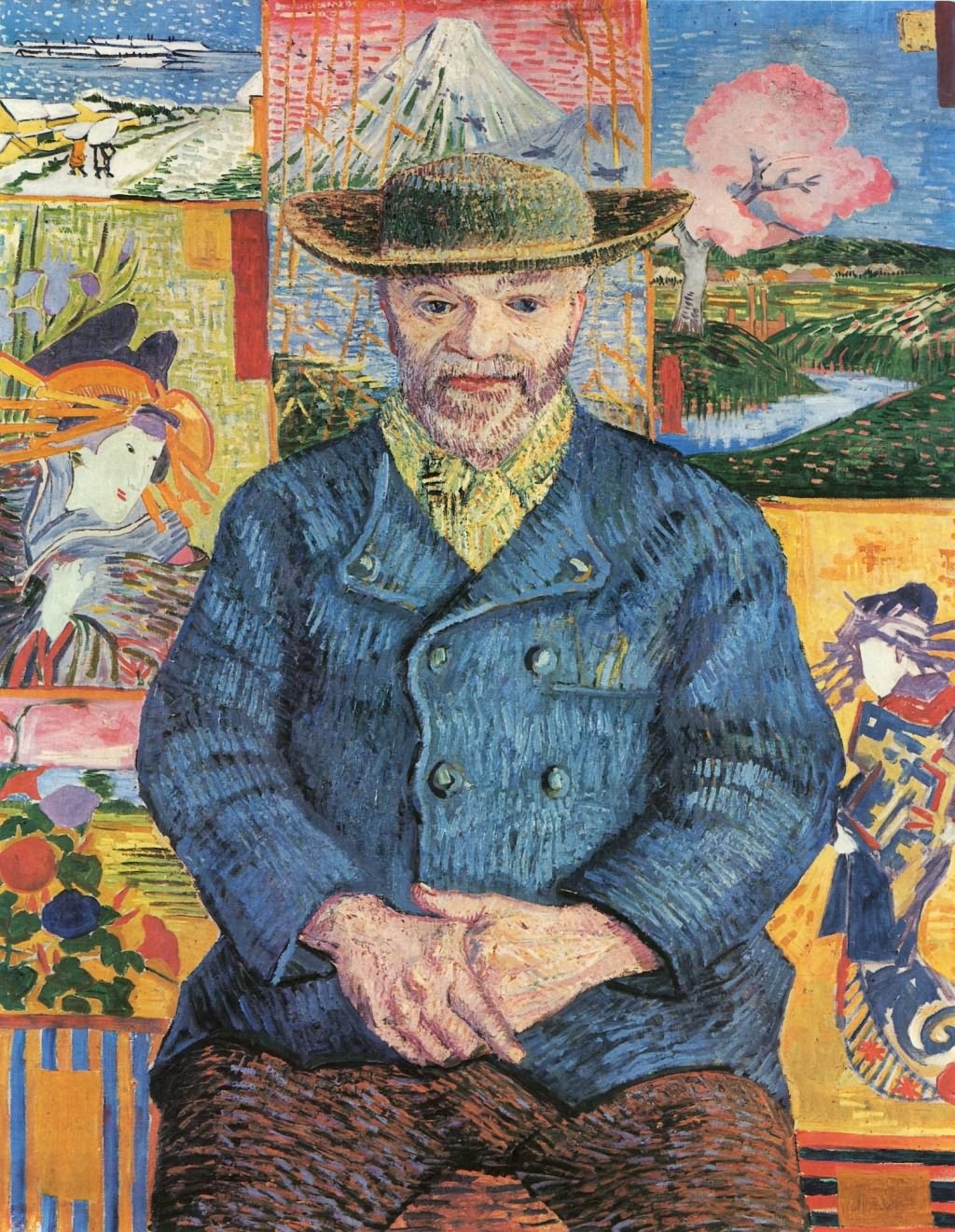Père Tanguy
Appreciation

Père Tanguy Nederland Vincent van Gogh Gallery and Appreciation
Portrait of Père Tanguy, painted by Vincent van Gogh in 1887, is one of three paintings of Julien Tanguy. The three works demonstrate a progression in Van Gogh's artistic style since arriving in Paris. The first painting is somber and the composition is simple. In the second painting Van Gogh introduces his Japanese prints. The last and most advanced in style, skill and color reflects integration of Japanese, Impressionist, and other influences of the Parisian artist community. The painting conveys a sense of serenity that Van Gogh seeks for himself. This last painting of Tanguy is in the Musée Rodin, Paris.
Père Tanguy was a Breton who was exiled and pardoned after taking part in the French Revolution. When Vincent van Gogh knew him, he owned a small artist’s supply shop. The shop was an important to the painters of the era. Impressionist painters in Paris were commonly found in Père Tanguy’s shop. Painters like Cézanne, Pissarro, and Gauguin, as well as their paintings, frequented the shop. Van Gogh painted a few portraits of Père Tanguy. This specific portrait, painted in the winter of 1887-88 of Père Tanguy is more well known because of its frontal perspective, like that of early photography. The development of photography is part of what inspired the impressionistic style. The technology to take an exact image of a person in turn created a style of painting determined to capture more than what the eye could see. Van Gogh’s style was driven by this goal as well as his own interest to involve his own thoughts in the artwork. In this portrait of Père Tanguy, van Gogh communicates his friendship with Tanguy and his own love of foreign artwork. All the while, van Gogh’s portrait falls into the popular theme of portrait figures surrounded by objects at that time. Van Gogh contrasts the flat, garish colors of the stylized Japanese woodcuts with the depth of the cool tones creating Père Tanguy’s portrait. However, he manages to tie these two ideas together by implementing warm, bright highlights in Père Tanguy’s face, hat, and hands. The angles in Tanguy’s posture are also mimicked in the Japanese woodcuts. This combination shows the relationship that van Gogh saw between his friend, the shop owner, and van Gogh’s pleasant experiences with exotic art. Tanguy’s visage is pivotal feature of the painting. The emphasis on varying skin tones, highlights, and lowlights create a recognizable person. This and spirit of the painting centering from Tanguy’s gaze is a stark contrast from the faces of the Japanese woodcuts. This depiction of the east and west in contrast show van Gogh’s understanding of essential differences between art from the Far East and Europe.